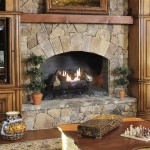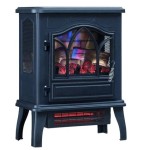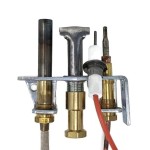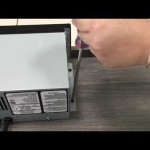Outdoor Fireplace Grill: Elevating Outdoor Cooking and Ambiance
The outdoor fireplace grill represents a convergence of functionality and aesthetics, providing opportunities for both culinary creation and atmospheric enhancement within an outdoor living space. It transcends the traditional barbecue grill, offering a robust and versatile cooking platform while simultaneously serving as a focal point for social gatherings and relaxation. These structures are typically constructed from durable materials such as brick, stone, or concrete, designed to withstand the elements and provide years of reliable service. Choosing an outdoor fireplace grill requires careful consideration of factors such as size, design, fuel type, and intended usage.
Unlike portable grills, outdoor fireplace grills are permanent fixtures that require proper planning and installation. Permits may be necessary, and adherence to local building codes is crucial to ensure safety and compliance. The placement of the grill should consider factors such as prevailing winds, proximity to structures, and accessibility for both cooking and maintenance. A well-designed outdoor fireplace grill can significantly enhance the value and appeal of a property.
Understanding the Benefits of an Outdoor Fireplace Grill
The advantages of an outdoor fireplace grill extend beyond simple food preparation. The inherent ambiance created by an open fire is unmatched by conventional gas or electric grills. The crackling sound of wood, the mesmerizing dance of the flames, and the radiant heat contribute to a uniquely relaxing and inviting atmosphere. This makes the outdoor fireplace grill an ideal centerpiece for entertaining guests or simply enjoying a quiet evening outdoors.
Furthermore, the cooking capabilities of these grills are often more versatile than those of standard barbecues. The larger cooking surface allows for the simultaneous preparation of multiple dishes, and the adjustable height of the grilling grate provides precise control over cooking temperatures. The use of wood or charcoal as fuel imparts a distinctive smoky flavor to food that is highly sought after by culinary enthusiasts. This allows for experimentation with various wood types to create customized flavor profiles.
An outdoor fireplace grill also serves as an extension of the indoor living space, blurring the lines between indoors and outdoors. It encourages spending more time in the fresh air, promoting a healthier and more active lifestyle. The inviting warmth of the fire can extend the outdoor season, allowing for enjoyment of the patio or garden even during cooler months. The inherent durability of these structures ensures long-term investment value, providing years of enjoyment and use.
Exploring Design and Construction Options
The design of an outdoor fireplace grill is highly customizable, allowing for integration with the existing architectural style of the home and surrounding landscape. Options range from rustic, natural stone structures to sleek, modern designs incorporating stainless steel and concrete. Incorporating features such as built-in storage for wood or charcoal, countertops for food preparation, and integrated seating areas can further enhance the functionality and aesthetic appeal of the grill.
The construction process typically involves a solid foundation, often made of concrete, to ensure stability and prevent settling over time. The firebox, where the fire is built, is constructed from fire-resistant materials such as firebrick or refractory cement. A chimney or flue is essential for venting smoke and ensuring proper airflow. The grilling surface is typically made of stainless steel or cast iron, chosen for its durability and heat retention properties. A damper system allows for control over the airflow and intensity of the fire.
Proper ventilation is a critical design consideration. The chimney must be appropriately sized to effectively draw smoke away from the cooking area and surrounding seating areas. The location of the grill should also be considered in relation to prevailing winds to minimize smoke exposure. Consulting with a qualified architect or contractor is recommended to ensure that the design meets all safety and building code requirements.
Fuel Choices and Cooking Techniques
The choice of fuel for an outdoor fireplace grill significantly impacts the flavor of the food and the overall cooking experience. Wood is a popular choice for its ability to impart a distinct smoky flavor. Different types of wood, such as hickory, mesquite, apple, and cherry, offer unique flavor profiles that can be paired with different types of food. Charcoal is another common fuel source, providing a consistent and easily controlled source of heat. Briquettes are a convenient option, while lump charcoal offers a more natural and flavorful alternative.
Cooking techniques on an outdoor fireplace grill are similar to those used on other types of grills, but the open fire introduces a greater degree of control and versatility. The height of the grilling grate can be adjusted to control the intensity of the heat, allowing for both direct and indirect cooking methods. Direct grilling involves placing food directly over the flames, ideal for searing steaks or grilling vegetables. Indirect grilling involves placing food to the side of the flames, allowing for slower cooking and smoking of larger cuts of meat.
Maintaining a consistent cooking temperature is crucial for achieving optimal results. The amount of fuel used and the airflow through the firebox can be adjusted to regulate the heat. A thermometer can be used to monitor the temperature of the cooking surface. Experimentation with different fuel types and cooking techniques is encouraged to discover the optimal combination for individual preferences and dishes.
Cleaning and maintaining an outdoor fireplace grill is essential for ensuring its longevity and safe operation. Regular cleaning of the grilling surface removes food residue and prevents the buildup of grease. The firebox should be cleaned periodically to remove ashes and debris. The chimney should be inspected and cleaned annually to ensure proper ventilation. Proper storage of wood or charcoal protects it from moisture and pests.
Safety is paramount when operating an outdoor fireplace grill. Never leave a fire unattended. Keep a fire extinguisher or water hose nearby in case of emergencies. Ensure that the grill is placed on a stable, non-combustible surface. Be aware of local fire restrictions and regulations. Educate all users about the proper operation and safety precautions associated with the grill.
Incorporating an outdoor fireplace grill into a landscape design can create a seamless transition between the structure and its surroundings. Planting trees and shrubs around the grill area can provide shade and privacy. A patio or deck provides a comfortable space for dining and entertaining. Outdoor lighting enhances the ambiance and extends the usability of the space into the evening hours. Coordinating the materials and finishes of the grill with the existing landscape elements creates a cohesive and visually appealing outdoor living space.

An Outdoor Fireplace With Built In Grill And Wood Storage Remodel Backyard

37 Diy Outdoor Fireplace And Fire Pit Ideas Godiygo Com Oven Backyard

Girse Outdoor Fireplace And Bbq Robey S

20 Modern Fireplace Design Ideas For Outdoor Living Spaces Designs Stone Fireplaces Cooking Grills

Outdoor Fire Pit Fireplace Design Build Professional Install Oasis Living

Weathering Steel Outdoor Fireplace With Grill Terrain

Fire Pit Bbq Grilling Grate Grill Grates Walden Backyards

Outdoor Cooking Fireplace Designs Backyard

Outdoor Fireplace With Grill Island And Big Green Egg Rustic Patio Raleigh By Ayers Hardscapes Landscapes Llc Houzz

Traditional Stone Outdoor Fireplace With Brick Oven And Grill Designs Patio Modern Kitchen
Related Posts








